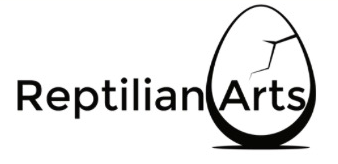- Home
- African Bullfrog Care
African Bullfrog Care

African Bullfrog Care Guide
Basic Information
African Bullfrogs, also known as Pyxie Frogs, are the second-largest frogs in the world and one of the few frog species with teeth. They are generally easy pets to care for, but their setups require a lot of thought, as amphibians need controlled humidity and temperatures. With good care, they can live anywhere between 15 to 30 years.
Health
If their temperature and humidity needs are unmet, bullfrogs can develop bacterial and fungal infections in the skin and eyes, which will require veterinarian care to resolve.
Handling is not recommended unless necessary. They get stressed easily and will give an excruciating bite. Grab them gently from the back and support their belly if they need to be handled.
African Bullfrogs can easily become obese. Maintaining their diet and preventing them from frequently eating fatty foods is very important.
Enclosures
Since these frogs get pretty big, a lot of room is necessary. A 10-gallon tank setup can work for juveniles, but they will need a bigger enclosure as they get bigger. A 20-gallon tank with a secure screen top is recommended for a single adult bullfrog. If housing multiple, the tank must be upgraded to a 40-gallon space so the bullfrogs don't become stressed and threatened by each other. Along with the substrate listed below, there are plenty of hiding spots using artificial vining plants, rounded cork bark, hides, caves, and leaf litter. Any other ornament besides the ones listed can still be used, but be sure to note that ornaments must withstand the weight of the frog and its burrowing behavior.
Heating/Lighting
These bullfrogs do well with a temperature gradient of 75-85, with a warm and cool end in the enclosure. Basking bulbs should be used on the enclosure, clamped on or on top of a screen covering. Bullfrogs run on a 12-hour day and 12-hour night cycle, so turn off the lights at night. UVB is not necessary but recommended for beneficial nutrition absorption. Avoid direct sunlight on the tank as it can encourage bacterial growth.
Substrate
The substrate for bullfrogs should be ideal for retaining moisture. Coco husk and plantation soil are good options for aiding humidity and easier cleanup. Sphagnum moss can also be added as a layer for moisture retention. The substrate should be around 4-5 inches deep to allow digging.
**Avoid anything with insecticides, pesticides, harmful chemicals, and insects/parasites.
Humidity
African Bullfrogs are very dependent on water and humidity in their environment. Humidity levels can range from 60-80%. It is crucial to keep their tank damp and regularly misted as bullfrogs need to be kept moist. Use a hygrometer to monitor humidity levels at all times. Daily misting is recommended.
Water
In addition to the high humidity necessary, bullfrogs will also need a bowl of water to soak in, which reaches up to their neck and is easy for them to get in and out of. Replace daily.
Food
These carnivorous eaters will eat just about anything that fits in their mouth and are easily susceptible to obesity. It is vital to regulate feeding frequency depending on their age. Young frogs can be fed every other day, while adult frogs should be fed every 3 days. Lean insects such as crickets, dubia roaches, locusts, and nightcrawlers are good high-protein options for a constant diet. Treat options include mealworms, waxworms, and the occasional gold fish. Grown mice can also be fed, but it's recommended not to feed them often, as they are high in fat. Feeder insects should be dusted with calcium frequently as a supplement.
**When feeding your bullfrog, use a food dish. They have a painful bite and will go for hands as they see hands as food.
Have another Question? Contact Us
